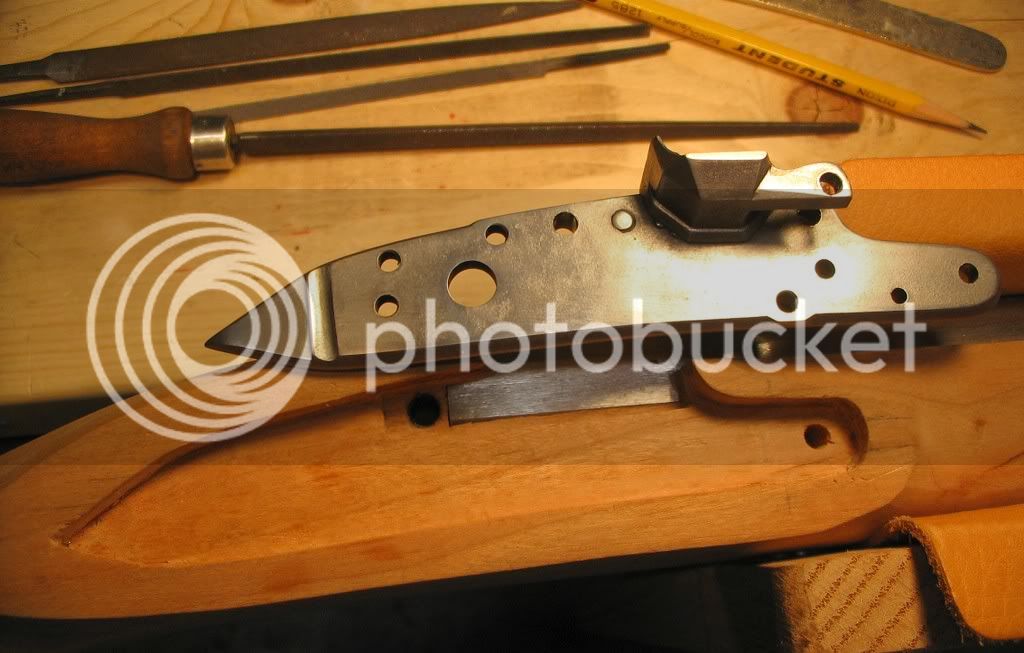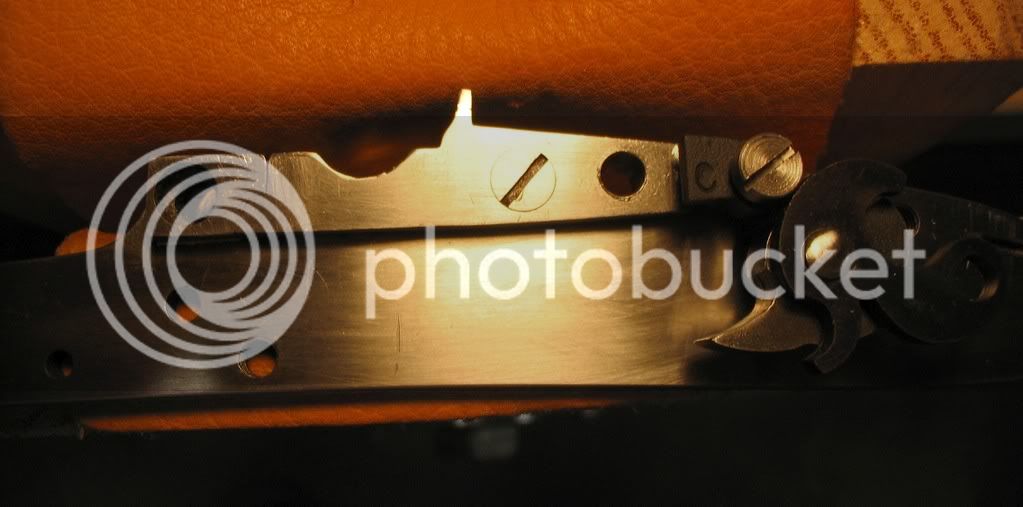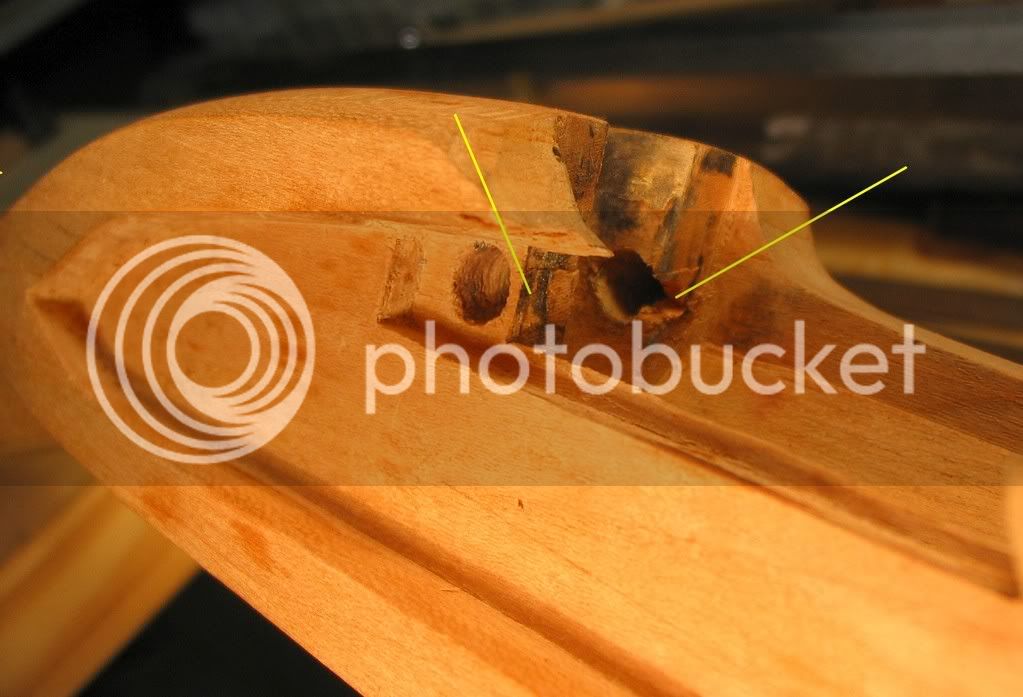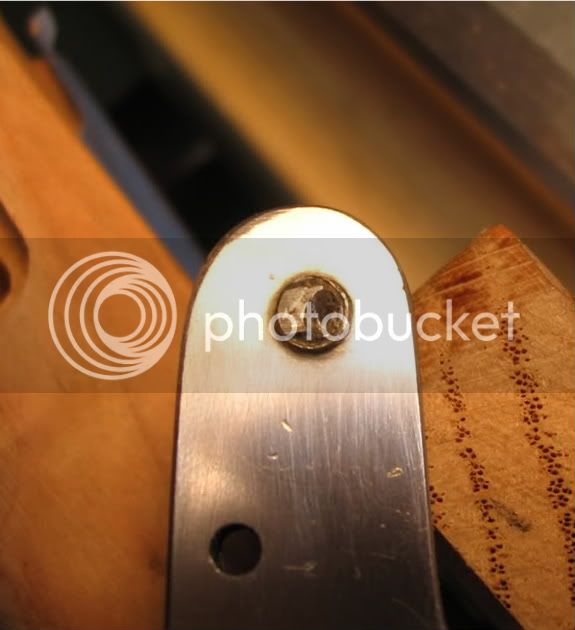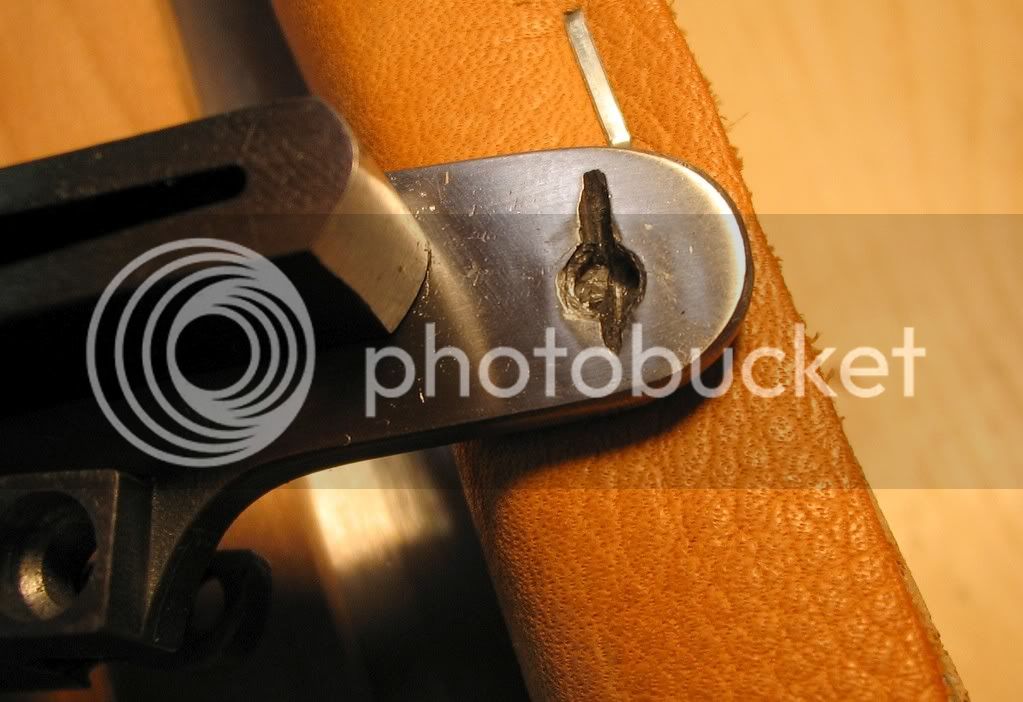The top screw should be as far back as possible without interfering with the bridle. I would go with a 10/32.which is a #21 drill bit.
You can buy a tap and drill set at any hardware store.
The front one is touchy...
I would try to put it as far forward and as high as you can go..while still getting solid threads..
anyone else is free to jump in..
Go with an 8/32..which is a #29 drill.
Square everything up in your press.. Mark the location on the lock side. Drill with the numbered bits, through the lock side.
Once you have the holes done.. You need to drill clearance holes a 13/36 for the rear and a 11/64 for the front. Just the stock..NOT THE LOCK
Tap the lock.. You should be good. Nice and square
The side plate.
Center the rear hole on the side plate..drill with the clearance bit.
Once you have the side plate screwed down.
Mark the center,the top and bottom of the front lock plate hole with a pencil so you can see it when you twist the front of the side plate over the hole.
That's where you want to drill..
Works every time.
I wish I could show you pics.
Do you have a book that you are working with??.
I have a copy of dixion's book you are welcome to use.
It was given to me from a friend and I already have a "well used one"
Regards
Mike
You can buy a tap and drill set at any hardware store.
The front one is touchy...
I would try to put it as far forward and as high as you can go..while still getting solid threads..
anyone else is free to jump in..
Go with an 8/32..which is a #29 drill.
Square everything up in your press.. Mark the location on the lock side. Drill with the numbered bits, through the lock side.
Once you have the holes done.. You need to drill clearance holes a 13/36 for the rear and a 11/64 for the front. Just the stock..NOT THE LOCK
Tap the lock.. You should be good. Nice and square
The side plate.
Center the rear hole on the side plate..drill with the clearance bit.
Once you have the side plate screwed down.
Mark the center,the top and bottom of the front lock plate hole with a pencil so you can see it when you twist the front of the side plate over the hole.
That's where you want to drill..
Works every time.
I wish I could show you pics.
Do you have a book that you are working with??.
I have a copy of dixion's book you are welcome to use.
It was given to me from a friend and I already have a "well used one"
Regards
Mike





